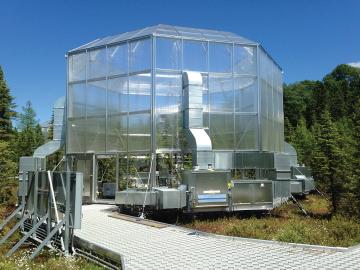Filter News
Area of Research
- (-) Climate and Environmental Systems (7)
- (-) Computational Chemistry (5)
- Advanced Manufacturing (7)
- Biological Systems (3)
- Biology and Environment (119)
- Biology and Soft Matter (4)
- Building Technologies (3)
- Chemical and Engineering Materials (3)
- Chemistry and Physics at Interfaces (7)
- Clean Energy (208)
- Computational Biology (1)
- Computational Engineering (2)
- Computer Science (4)
- Data (1)
- Earth Sciences (1)
- Electricity and Smart Grid (2)
- Energy Frontier Research Centers (7)
- Energy Sciences (2)
- Fuel Cycle Science and Technology (2)
- Functional Materials for Energy (10)
- Fusion and Fission (43)
- Fusion Energy (7)
- Geographic Information Science and Technology (1)
- Isotopes (24)
- Materials (186)
- Materials Characterization (2)
- Materials for Computing (17)
- Materials Synthesis from Atoms to Systems (8)
- Materials Under Extremes (8)
- National Security (53)
- Neutron Data Analysis and Visualization (2)
- Neutron Science (83)
- Nuclear Science and Technology (35)
- Quantum Condensed Matter (3)
- Quantum information Science (5)
- Renewable Energy (2)
- Sensors and Controls (2)
- Supercomputing (172)
- Transportation Systems (6)
News Topics
Media Contacts

In the vast frozen whiteness of the central Arctic, the Polarstern, a German research vessel, has settled into the ice for a yearlong float.
For the past six years, some 140 scientists from five institutions have traveled to the Arctic Circle and beyond to gather field data as part of the Department of Energy-sponsored NGEE Arctic project. This article gives insight into how scientists gather the measurements that inform t...

Deep stores of carbon in northern peatlands may remain stable despite rising temperatures, according to a team of researchers from several U.S.-based institutions. And that is good news for now, the researchers said. Florida State University ...






The American Conference on Neutron Scattering returned to Knoxville this week, 12 years after its inaugural meeting there in 2002.





